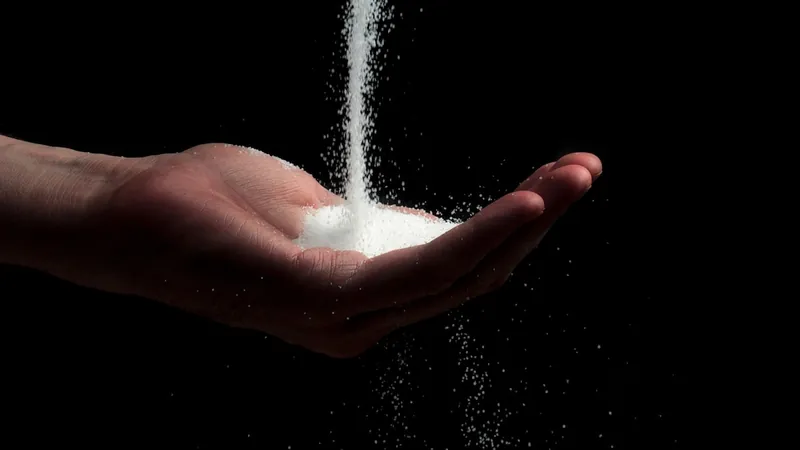
Is Your Salt Intake Putting Your Health at Risk? Here’s What You Need to Know!
2025-03-27
Author: Emma
Salt - it’s that savory companion that enhances our meals, yet its relationship with our health is more complex than you might think. While it’s an essential nutrient, overconsumption can lead to dire health issues such as hypertension and heart disease. But how much salt is really too much?
According to recommendations from leading health organizations, most adults should limit their sodium intake to around 2 to 2.3 grams a day—an amount equivalent to a teaspoon of table salt. This guideline is designed to prevent spikes in blood pressure and related health problems. However, recent findings indicate that the average American consumes a staggering 3.4 grams of sodium daily, contributing to the soaring rates of hypertension affecting nearly half of American adults.
But what is it about salt that can wreak havoc on our bodies? Table salt is comprised of two key ions: sodium and chloride. While both are essential for health, sodium often gets the bad rap. When consumed excessively, sodium disrupts the body's balance, leading to water retention and increased blood volume. In turn, this strains the heart and kidneys, potentially resulting in serious conditions like heart disease and kidney failure over time. In fact, long-term high salt intake has also been associated with stomach ulcers, cancer, and osteoporosis.
The ongoing debate surrounding salt intake and health has garnered attention from researchers, emphasizing the complexity of dietary salt recommendations. Some experts argue that the current limits may not be appropriate for everyone. For instance, individual factors like medical history, physical activity levels, and even genetics can influence how our bodies respond to salt. In some cases, athletes or those with physically demanding jobs may tolerate higher salt intake without negative consequences.
Additionally, salt sensitivity varies widely among individuals. For instance, studies reveal that African Americans experience higher rates of hypertension, potentially due to a mixture of genetic and socioeconomic factors, which has led some researchers to advocate for a personalized approach to dietary recommendations rather than a one-size-fits-all guideline.
Cutting down on sodium can be quite the challenge, especially since over 70% of the salt we consume comes from processed foods rather than from our own cooking. Even everyday staples like bread can harbor surprising amounts of sodium. Health experts suggest meal planning and cooking at home as effective ways to manage salt intake, while alternatives like potassium-rich salt substitutes can help satisfy those cravings without the added sodium.
An overwhelming body of research hints that there’s more to salt than just its effect on blood pressure. Recent studies have pointed out that salt may also play roles in cellular functions, immune responses, and inflammation. This evolving understanding of salt's multifaceted influence on health is reshaping the conversation around sodium consumption.
So, how do you manage your salt intake in a tasty yet healthy way? Experts recommend opting for fresh fruits, vegetables, and unsalted nuts instead of typical salty snacks. And remember, indulging in your favorite salty treats every once in a while isn't a health sin, especially when balanced with an active lifestyle. The key is moderation, education, and a keen awareness of the salt that creeps into our diets.
In the ever-controversial world of salt consumption, one thing is clear: being informed about how much salt is right for your body can make all the difference in leading a healthier life.









 Brasil (PT)
Brasil (PT)
 Canada (EN)
Canada (EN)
 Chile (ES)
Chile (ES)
 Česko (CS)
Česko (CS)
 대한민국 (KO)
대한민국 (KO)
 España (ES)
España (ES)
 France (FR)
France (FR)
 Hong Kong (EN)
Hong Kong (EN)
 Italia (IT)
Italia (IT)
 日本 (JA)
日本 (JA)
 Magyarország (HU)
Magyarország (HU)
 Norge (NO)
Norge (NO)
 Polska (PL)
Polska (PL)
 Schweiz (DE)
Schweiz (DE)
 Singapore (EN)
Singapore (EN)
 Sverige (SV)
Sverige (SV)
 Suomi (FI)
Suomi (FI)
 Türkiye (TR)
Türkiye (TR)
 الإمارات العربية المتحدة (AR)
الإمارات العربية المتحدة (AR)